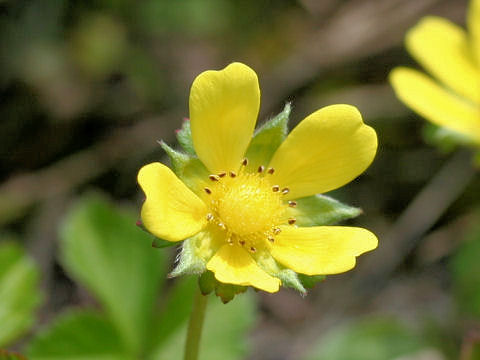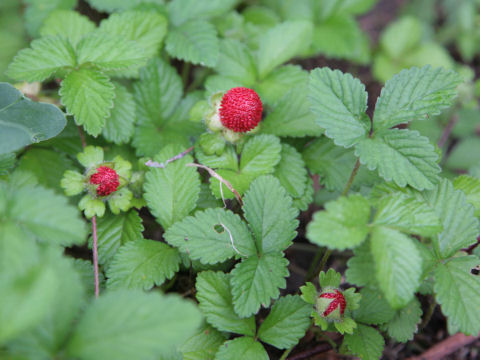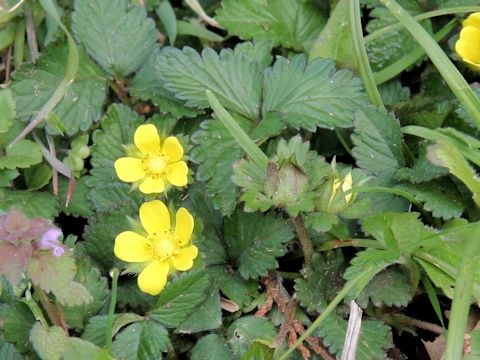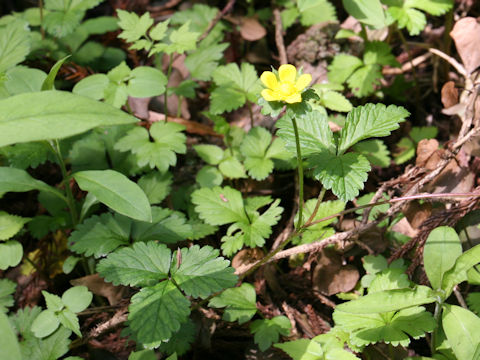
|
|
|
               |
|
|
|
íªÌenðͶßAìAWAÉLªzµÄ¢Ü·BR¹¢âÑÈÇA¼úAÌââ¼Á½Æ±ëɶ¦A³ÍPOZ`ÙÇÉÈèÜ·BtÍRo¡tÅASÌɦѪ èÜ·BS©çU²ëAÔsðLεĩF¢Ôð穹ܷBäÓÐÍQñÅAO¤ÌäÓЪڧ¿Ü·BÊÀÍZgFÉnµõòª èÜ·ªAH×Äàü¡µ¢àÌÅÍ èܹñB |
|
|
oÈwrC`S®Ì½NÅAw¼Í Duchesnea indicaBp¼Í Indian strawberryB |
|
|
The Indian strawberry (Duchesnea indica) belong to Rosaceae (the Rose family). It is a perennial herb that is widely distributed in Southeast Asia, including various parts of Japan. This herb grows in waste semi-shady places of woodland edges or along mountain passes and can reach about 10 cm in height. The leaves are trifoliate compound and the plant is covered with silky hairs. The yellow flowers come on the peduncles from April to June. The sepals are arranged in double rows, and the outer accessory sepals are visible. The achenes ripen in glossy red and tasteless. |
|
|
[ãEPEV] Þǧºs¬L´ÉÄA2006N0430úBeB [Q] ·ì§¼{sàcui²Ó¶jvÉÄA2005N0521úBeB [R] ¤m§L´sâè¬u¯Ñ¼´vÉÄA2004N0410úBeB [S] ò§Kãì¬túìuÉRvÉÄA2005N1009úBeB [T] ·ìs¼ã·òÉÄA2005N0610úBeB(photo by Yoko Kitagawa) [U] ò§ªSìvc©ÉÄA2007N0608úBeB [W] AJEeLTXButH[g[XA¨vÉÄA2006N0429úBeB(photo by Jon Suehiro) [XEPO] çt§æsåpÉÄA2012N0418úBeB [PP`PREº] {é§åäs¾æu¾RvÉÄA2021N0508úBeB |

|
|
Shu Suehiro |